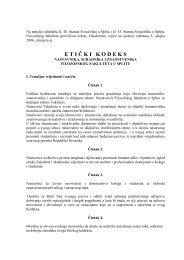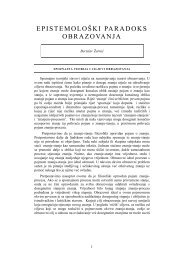Understanding Human Communication
Understanding Human Communication
Understanding Human Communication
You also want an ePaper? Increase the reach of your titles
YUMPU automatically turns print PDFs into web optimized ePapers that Google loves.
showed that a smaller percentage of groups (about 30 percent) didn’t follow a<br />
cyclical pattern. Instead, they skipped the preliminary phases and focused on<br />
the solution.<br />
What is the significance of the findings? They tell us that,like children growing<br />
toward adulthood,many groups can expect to pass through phases.Knowing that<br />
these phases are natural and predictable can be reassuring. It can help curb<br />
your impatience when the group is feeling its way through an orientation stage.<br />
It can also help you feel less threatened when the inevitable and necessary conflicts<br />
take place. <strong>Understanding</strong> the nature of emergence and reinforcement can<br />
help you know when it is time to stop arguing and seek consensus.<br />
MAINTAINING POSITIVE RELATIONSHIPS<br />
The task-related advice in the preceding pages will be little help if the members<br />
of a group don’t get along.We therefore need to look at some ways to maintain<br />
good relationships among members. Many of the principles described earlier in<br />
this book apply here. Because these principles are so important, we will review<br />
them here.<br />
Basic Skills<br />
Groups are most effective when members feel good about one another. 19 Probably<br />
the most important ingredient in good personal relationships is mutual respect,<br />
and the best way to demonstrate respect for the other person is to listen<br />
carefully. A more natural tendency, of course, is to assume you understand the<br />
other members’positions and to interrupt or ignore them.Even if<br />
you are right, however, this tendency can create a residue of ill<br />
feelings. On the other hand, careful listening can at least improve<br />
the communication climate—and it may even teach you<br />
something.<br />
Groups are bound to disagree sooner or later.When they do,<br />
the win–win problem-solving methods outlined in Chapter 7<br />
boost the odds of solving the immediate issue in the most constructive<br />
way. 20 As you read in Chapter 8, taking votes and letting<br />
the majority rule can often leave a sizable minority whose<br />
unhappiness can haunt the group’s future work. Consensus is<br />
harder to reach in the short term but far more beneficial in the<br />
long term.<br />
Building Cohesiveness<br />
Cohesiveness can be defined as the totality of forces that causes<br />
members to feel themselves part of a group and makes them want<br />
to remain in that group.You might think of cohesiveness as the<br />
glue that bonds individuals together, giving them a collective<br />
sense of identity.<br />
Highly cohesive groups communicate differently than less cohesive<br />
ones. Members spend more time interacting, and there<br />
are more expressions of positive feelings for one another.They report<br />
more satisfaction with the group and its work.In addition,co-<br />
CHAPTER 9 SOLVING PROBLEMS IN GROUPS 305<br />
CULTURAL IDIOM<br />
on the other hand: from the<br />
other point of view<br />
boost the odds of: increase the<br />
chances of success

















